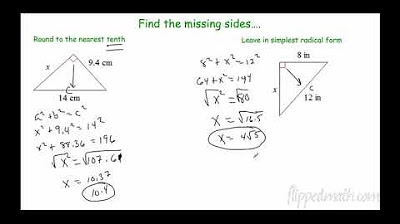APES Video Notes 3.4 - Carrying Capacity
Summary
TLDRIn this engaging lesson, Mr. Smith explores the concept of carrying capacity in ecosystems, comparing it to the maximum occupancy of a restaurant. He explains how resource availability, such as food and habitat, influences population dynamics, leading to fluctuations around carrying capacity. Using examples like deer and reindeer populations, he highlights the effects of overshoot and subsequent die-offs. The video also examines predator-prey relationships, particularly between hares and lynx, illustrating how these interactions impact population stability. Viewers are encouraged to analyze data and reflect on environmental issues related to carrying capacity.
Takeaways
- 😀 Carrying capacity refers to the maximum number of individuals of a species that an ecosystem can support sustainably based on resource availability.
- 🌱 Limiting factors, such as food, water, and habitat, determine the carrying capacity of an ecosystem for a given species.
- 🔄 Populations typically fluctuate around carrying capacity rather than maintaining a steady state, often experiencing overshoot and die-off cycles.
- 🐾 Overshoot occurs when a population temporarily exceeds its carrying capacity, leading to resource depletion.
- 💔 A die-off can be catastrophic, resulting in a major decline in population size due to severe resource shortages or disease outbreaks.
- 🦌 Deer populations demonstrate a typical cycle of rapid growth followed by die-offs as resources become scarce after overshoot.
- ❄️ Reindeer on St. Paul Island initially thrived but overshot their carrying capacity, leading to a significant population crash due to overgrazing.
- 🌾 Adaptation is key; reindeer adjusted their diet from lichen to grasses during winter, allowing their population to recover after a crash.
- 🐇 The relationship between Lynx and hare populations exemplifies predator-prey dynamics, where the populations influence each other in a cyclical pattern.
- 📊 Analyzing data and understanding ecological relationships are crucial for effective wildlife management and conservation efforts.
Q & A
What is carrying capacity?
-Carrying capacity is the maximum number of individuals of a particular species that an ecosystem can support based on the availability of resources like food, water, and habitat.
How can we visualize carrying capacity?
-Carrying capacity can be compared to the maximum occupancy limit of a restaurant, which is determined by how many customers can be served comfortably with the available space and staff.
What are limiting factors in an ecosystem?
-Limiting factors are resources that constrain the population size of a species, such as food, water, and suitable habitat for nesting.
What happens when a population exceeds its carrying capacity?
-When a population exceeds its carrying capacity, it results in overshoot, leading to resource depletion and often a subsequent die-off as individuals struggle to survive.
What is an example of a population that experiences overshoot and die-off?
-An example is the deer population, which may suddenly increase in spring but can decline when there isn't enough food available to support the larger population.
What happened to the reindeer population on St. Paul Island?
-The reindeer population grew from 25 individuals to a peak of around 1,500, leading to overgrazing of lichen. This caused a severe population crash to just eight individuals in 1950, but they later adapted to survive on grasses.
How does predation affect carrying capacity?
-Predation can lower the carrying capacity for prey species. For example, the hare population increases when lynx are few, but as hare numbers rise, lynx populations also grow, eventually leading to a crash in both populations due to food scarcity.
What role does the predator-prey relationship play in population dynamics?
-Predator-prey relationships create a cyclical dynamic where increases in prey lead to increases in predators, which can then lead to a decline in prey and subsequently in predators, illustrating the interconnectedness of species within an ecosystem.
What is a catastrophic die-off?
-A catastrophic die-off occurs when a population experiences a significant decline due to severe resource depletion, disease outbreaks, or famine, leading to a drastic reduction in population size.
Why is it important to understand carrying capacity in ecosystems?
-Understanding carrying capacity is crucial for conservation and management efforts, as it helps predict how populations will respond to changes in resource availability and the potential impacts on biodiversity and ecosystem health.
Outlines

This section is available to paid users only. Please upgrade to access this part.
Upgrade NowMindmap

This section is available to paid users only. Please upgrade to access this part.
Upgrade NowKeywords

This section is available to paid users only. Please upgrade to access this part.
Upgrade NowHighlights

This section is available to paid users only. Please upgrade to access this part.
Upgrade NowTranscripts

This section is available to paid users only. Please upgrade to access this part.
Upgrade NowBrowse More Related Video

English Expressions: three-word phrasal verbs

Penggunaan Simple Present Tense dan Contohnya | Kampung Inggris LC

Geometry – 7.1 Pythagorean Theorem and Its Converse

From Novice to Expert: Naming Chemicals Made Easy

Rounding and Working with Significant Figures in Physics

How to Write Chemical Equations

ESL - Writing a newspaper article (step-by-step guide)
5.0 / 5 (0 votes)